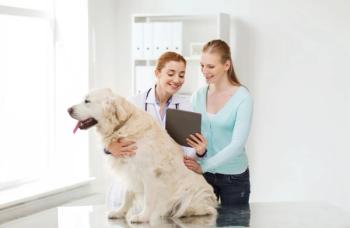
Tips for protecting pets and livestock from poor air quality as wildfire smoke spreads in the US
The American Veterinary Medical Association warns that the wildfires from Canada are causing poor air quality in parts of the US, which could affect animals
The American Veterinary Medical Association (AVMA) recently reminded the public of the risks wildfire smoke can pose to the health of pets and livestock.1 The announcement came as wildfires in Canada have caused poor air quality in the Midwest and eastern coast of the United States, as well as in New England.
Canada is currently facing its second worst wildfire season on record.2 So far this calendar year, the country has seen almost 4000 fires.2
The air quality in various states in the US has been affected because of the wildfire smoke moving across the border. According to reports, air quality in Wisconsin, Michigan, and Minnesota reached “concerning levels” this past weekend, with regions in Illinois and Indiana currently under air quality alerts.2 Moreover, health officials are encouraging residents in New York, Vermont, New Hampshire, and Maine, to limit outdoor activity to minimize exposure to smoke pollution.2
Outdoor activity should also be limited in pets, as animals are also at risk of smoke irritation. "When wildfires affect air quality, it's not just humans who are at risk; our animals are too," Michael Q. Bailey, DVM, DACVR, president of the AVMA, said in an AVMA news release.1 "If the air looks or smells smoky, or if you're feeling the effects yourself, it's best to take steps to make sure your pets are safe, and stay safe. Awareness and preparation can go a long way in protecting their health."
Animals with preexisting heart or lung disease are at higher risk of respiratory distress from fine particles in smoke. According to the AVMA, pets exhibiting any of the following symptoms should be evaluated by a veterinarian1:
- Coughing or gagging
- Difficulty breathing, which may include open mouth breathing and increased noise when breathing
- Eye irritation and excessive eye watering
- Inflammation of the throat or mouth
- Nasal discharge
- Asthma-like symptoms
- Increased breathing rate
- Fatigue or weakness
- Disorientation or stumbling
- Reduced appetite and/or thirst
Amid poor air quality events, veterinary professionals should advise clients to keep their pets indoors as much as possible and maintain closed windows.1 Birds in particular should not be allowed outside when there is smoke or particulate matter in the air, as these animals are especially susceptible to respiratory conditions.
When it comes to dogs and cats, these animals should only be let outside for brief bathroom breaks if necessary, during air quality alerts. During these air quality events, pets should not engage in intense outdoor exercise. “Exercise pets when dust and smoke has settled,” wrote the AVMA in its notice.1
The organization also recommends having a
Protecting livestock
For livestock, exercise should also be limited when smoke is visible. Having animals engage in activities that significantly increases airflow into and out of the lungs should especially be avoided, said the AVMA.1
Fresh water should be provided at various locations near feeding areas. Moreover, exposure to dust should be limited. To limit dust exposure, the AVMA recommends feeding low-dust or dust-free feeds. Farmers can also sprinkle or mist the livestock holding area.1
After air quality reaches normal levels again, livestock should be given approximately 4 to 6 weeks to recover. “Attempting to handle, move, or transport livestock may delay healing and compromise your animals' performance,” wrote the AVMA.1
RELATED:
Having a livestock evacuation plan is also advised. Those who do not have trailers to transport their animals quickly should aim to create a network of reliable resources that can help with transportation during emergency situations. Livestock owners are encouraged to reach out to neighbors, local haulers, farmers, producers, or other transportation providers ahead of time.
Additionally, keeping the barn and field in good conditions can help decrease fire risks for horses and other livestock. “Make sure barns and other structures are stable, promptly remove dead trees, clear away brush, and maintain a defensible space around structures,” advises the AVMA.1
References
- Veterinarians warn of wildfire smoke risks to pets and livestock. News release. American Veterinary Medical Association. August 5, 2025. Accessed August 7, 2025. https://prnmedia.prnewswire.com/news-releases/veterinarians-warn-of-wildfire-smoke-risks-to-pets-and-livestock-302522204.html
- Wright K. Canada wildfires cause poor air quality in the midwest and northeast U.S. npr. August 3, 2025. Accessed August 7, 2025. https://www.npr.org/2025/08/03/g-s1-80826/canada-wildfires-cause-poor-air-quality-in-the-midwest-and-northeast-us
- Roach KM. Preparing for an emergency. dvm360. June 21, 2024. Accessed August 7, 2025.
https://www.dvm360.com/view/preparing-for-an-emergency
Newsletter
From exam room tips to practice management insights, get trusted veterinary news delivered straight to your inbox—subscribe to dvm360.




